Introduction
Managing enterprise data can be overwhelming due to its volume and the associated security challenges. Enterprise analytics can benefit your business by unifying, organizing, and visualizing your data, driving informed decisions. In this blog, we’ll explain what enterprise analytics is, its benefits, key features of an enterprise analytics platform, and a few real-world examples.
What is enterprise analytics?
Enterprise analytics is the practice of analyzing an organization’s data, from all departments, teams, and systems, to drive informed business decisions. It helps organizations move beyond spreadsheets and manual reporting by offering live dashboards, future projections, and self-service data exploration for everyone, from executives to frontline workers.
Why enterprise analytics matters for businesses
Enterprise analytics empowers smarter, faster decisions by delivering real-time metrics for every business function, from sales to strategy. Here’s how it can transform your business.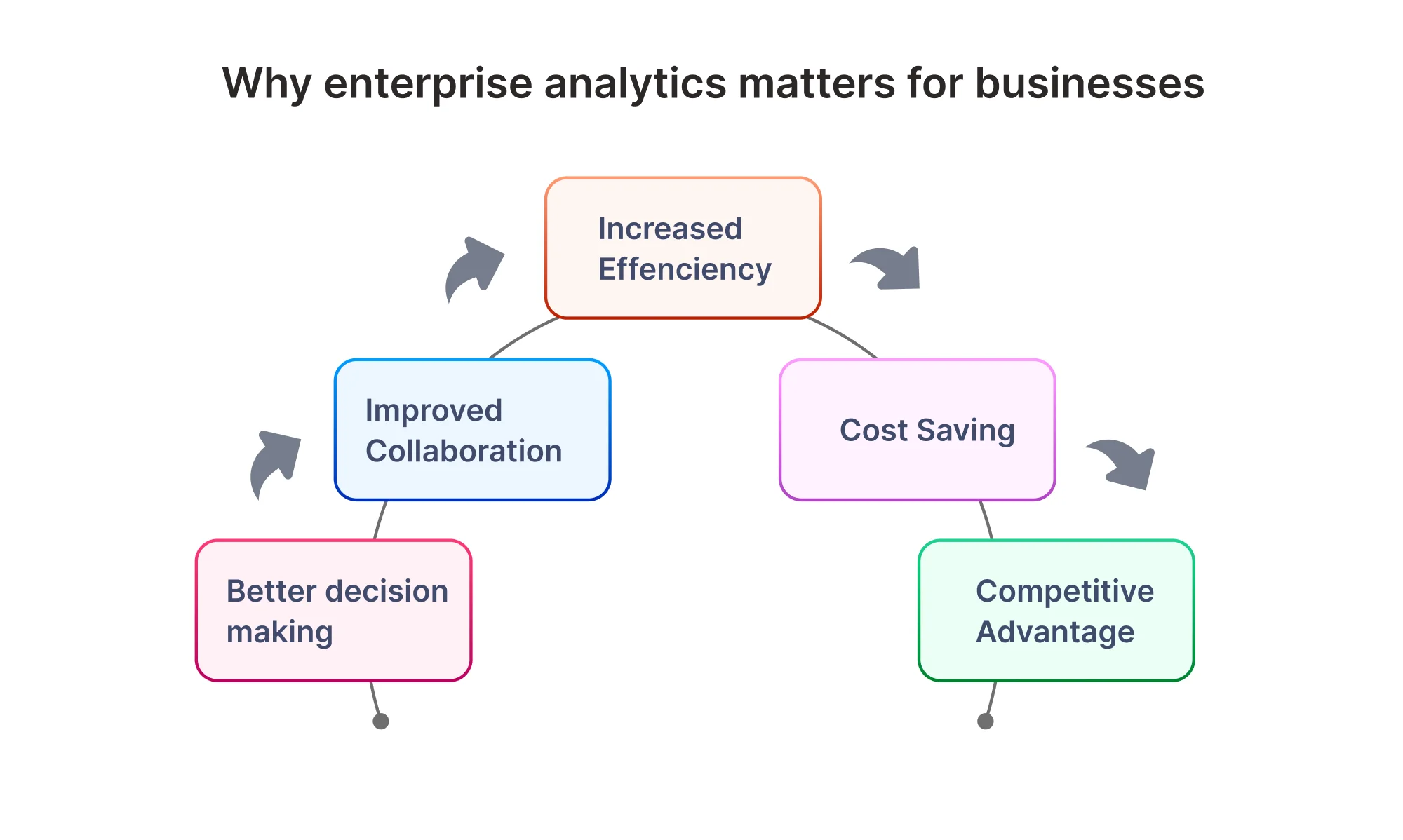
- Better decision-making: Analytics helps you make choices based on facts and data, not guesses. It shows you what’s working and what’s not, so you can plan better.
- Improved collaboration: With enterprise analytics dashboards and reports, teams can see the same up-to-date information, which makes it easier to work together and stay aligned.
- Increased efficiency: Analytics software saves you time by automating reports and tracking. Your team can focus more on important work instead of collecting data manually.
- Cost savings: Analytics shows where money is being wasted and helps you spend smarter. It helps cut down on unnecessary costs.
- Competitive advantage: With real-time insights, your business can quickly respond to changes, stay ahead of trends, and beat the competition.
Now that we understand the benefits, let’s look at the features you need in an enterprise analytics platform.
Must-have features in an enterprise analytics platform
These key features will help you make an informed decision and set your business up for success. 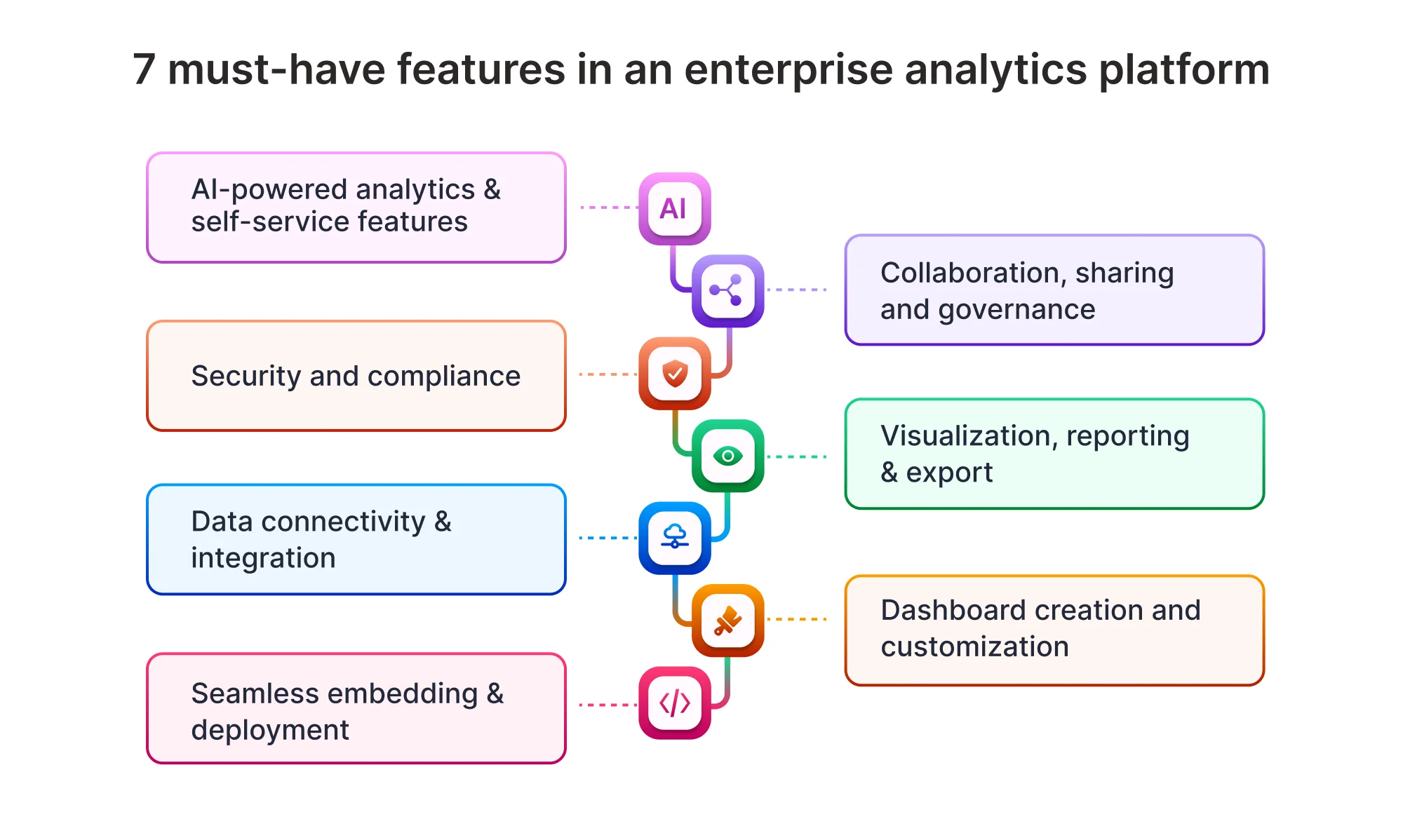
Collaboration, sharing, and governance features
An analytics platform should provide secure collaboration and dashboard sharing. It should provide features for data governance, so only authorized people have access to data.
Dashboard creation and customization
A good platform lets teams build and customize dashboards without coding or other specialized knowledge. The use of a drag-and-drop tool lets everyone create dashboards intuitively.
AI-powered analytics and self-service features
Many modern platforms let users manipulate data independently using natural language queries. Generative AI features are capable of delivering instant visual or text answers.
Data connectivity and integration
The platform you choose should seamlessly connect to many data sources so that analysis can take place on all the data within your organization, regardless of where it’s stored.
Visualization and exporting
Choose a platform that simplifies complex data into clear visuals and allows easy report exports for sharing findings across the organization.
Embedding and deployment
Some platforms allow you to embed dashboards directly into apps or portals and offer flexible deployment options (cloud, on-premises, or hybrid). Evaluate your needs and choose the platform that matches your IT strategy.
Security and compliance
Ensure the platform has strong security controls, such as role-based access permissions and encryption. Assess your compliance requirements and compare them with what the platform offers as far as certifications of compliance.
How enterprise analytics is used by different industries
Enterprise analytics solves real challenges across many industries.
Retail
In retail, managers often face challenges like stockouts, overstocking, and shifting customer demand. Enterprise analytics helps overcome these issues by providing real-time metrics for inventory levels, product performance, and order fulfilment. With a retail inventory management dashboard, businesses can optimize stock, reduce waste, and better meet customer needs.
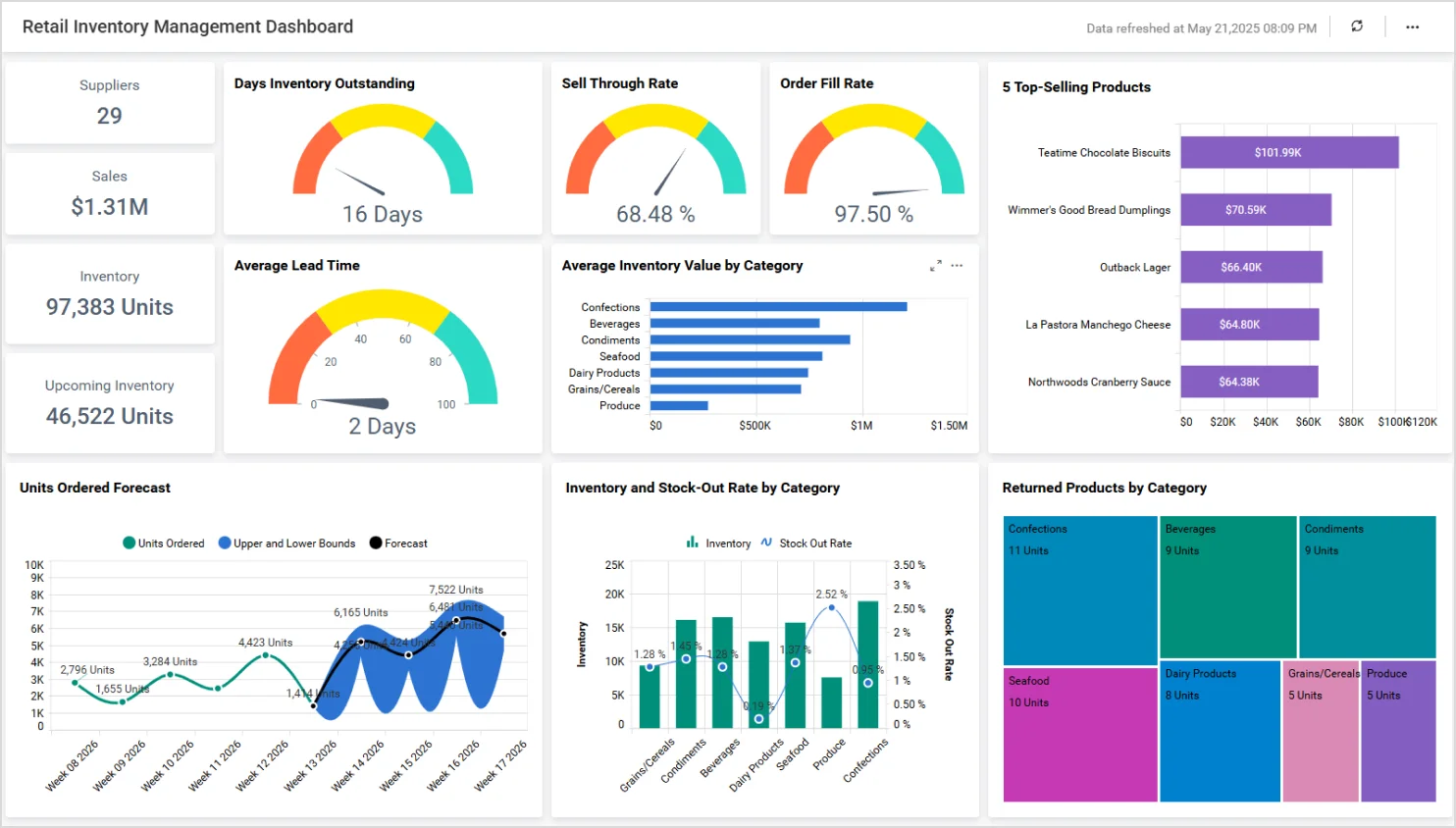
Finance
Financial institutions deal with challenges such as risk management, regulatory compliance, and profitability. Enterprise analytics helps monitor large volumes of transactions and loan data in real time. A loan performance dashboard tracks approvals, loan types, and rejection rates, enabling early risk detection and better lending decisions—improving compliance and profits.
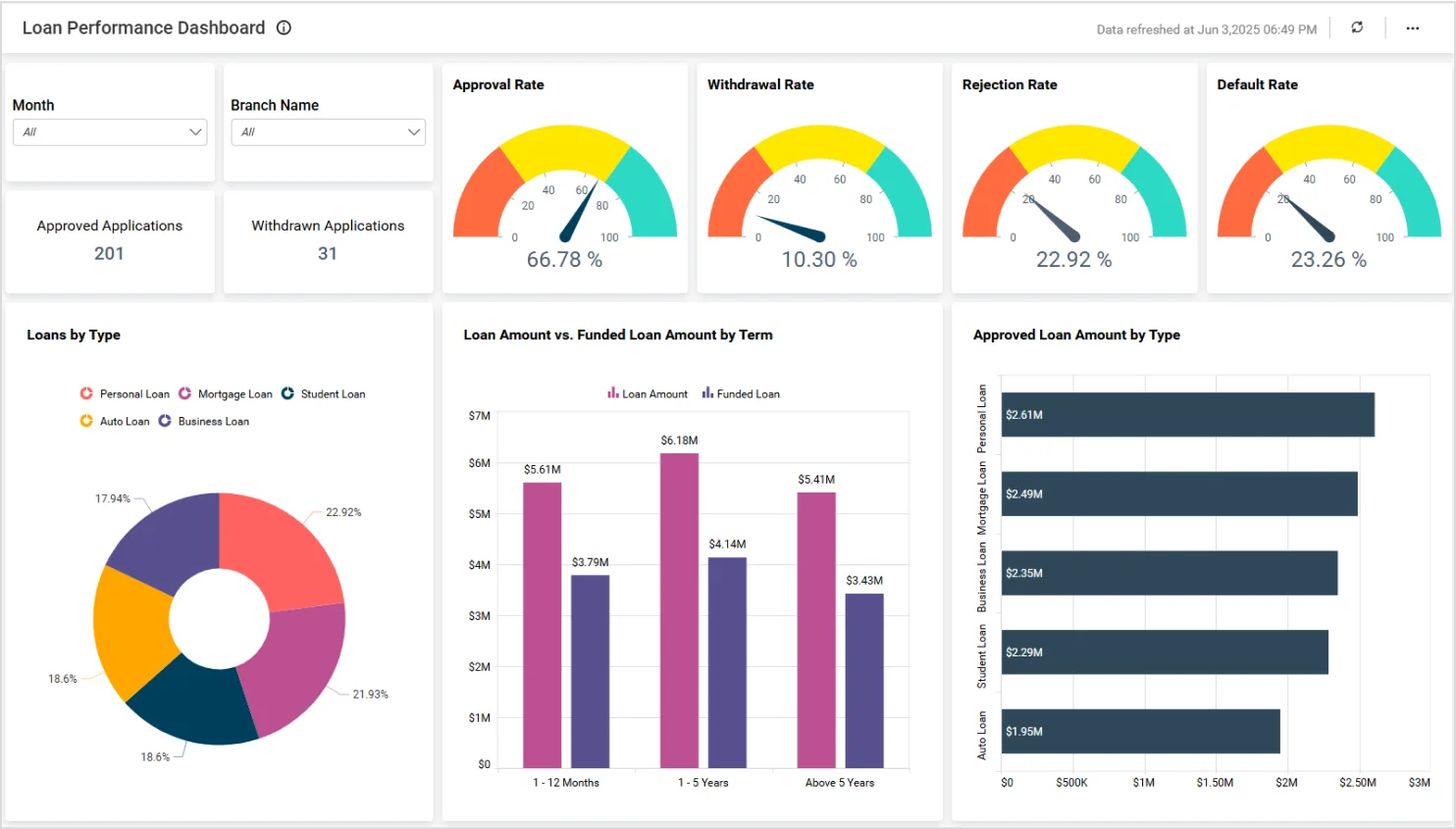
Manufacturing
Manufacturers can struggle with production inefficiencies caused by equipment downtime and delays. Enterprise analytics enables better visibility into operations through real-time data. A production monitoring dashboard shows defect rates, equipment efficiency, and cost data, allowing predictive maintenance and smoother operations.
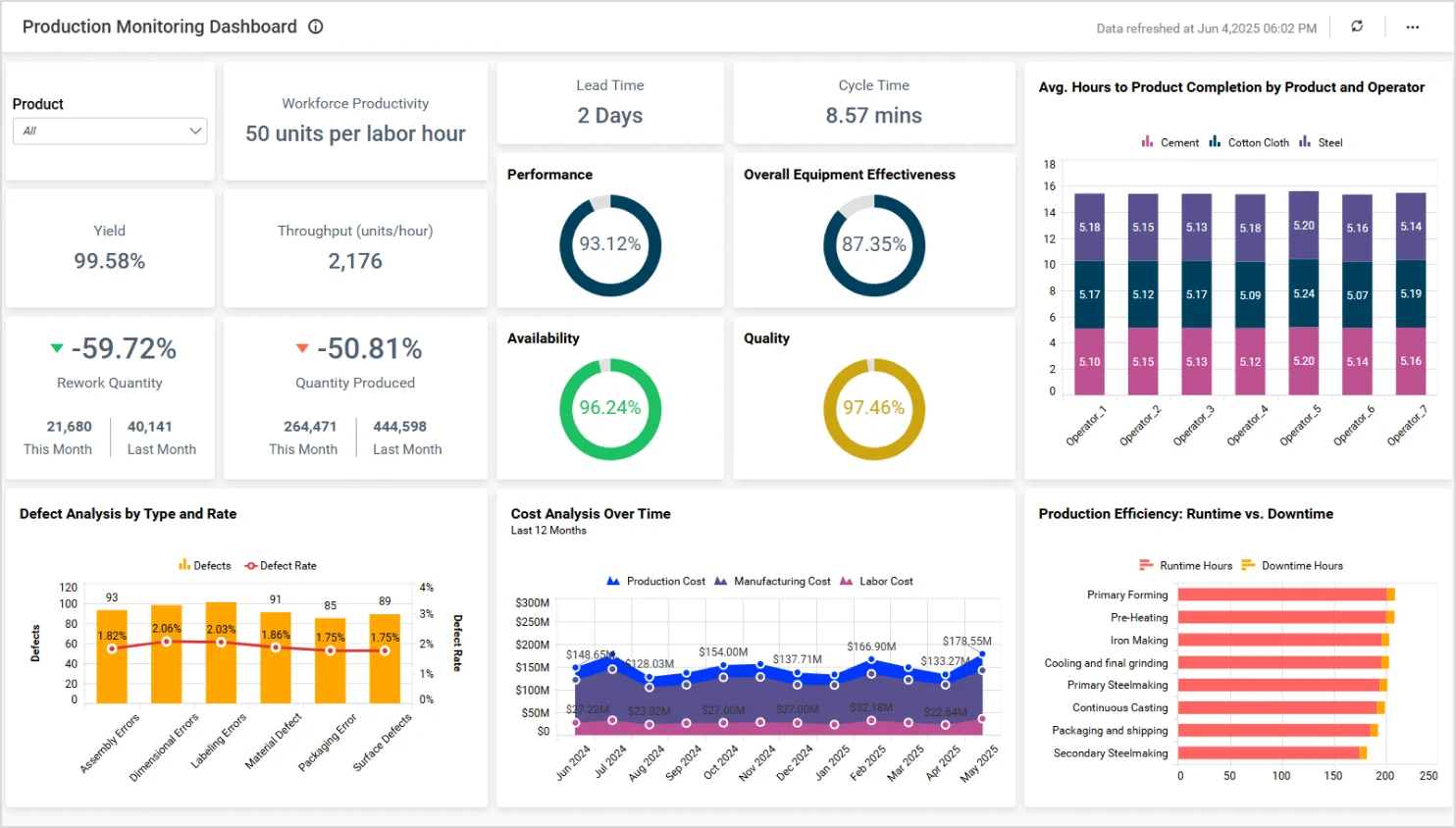
Education
Educational institutions often struggle to monitor student progress effectively and allocate resources efficiently. The challenge lies in identifying underperforming students early enough to intervene and promote academic success. Enterprise analytics empowers schools with a student performance analysis dashboard to visualize key metrics such as participation rates, exam scores, and student demographics. This can lead to improved student outcomes and better resource utilization.
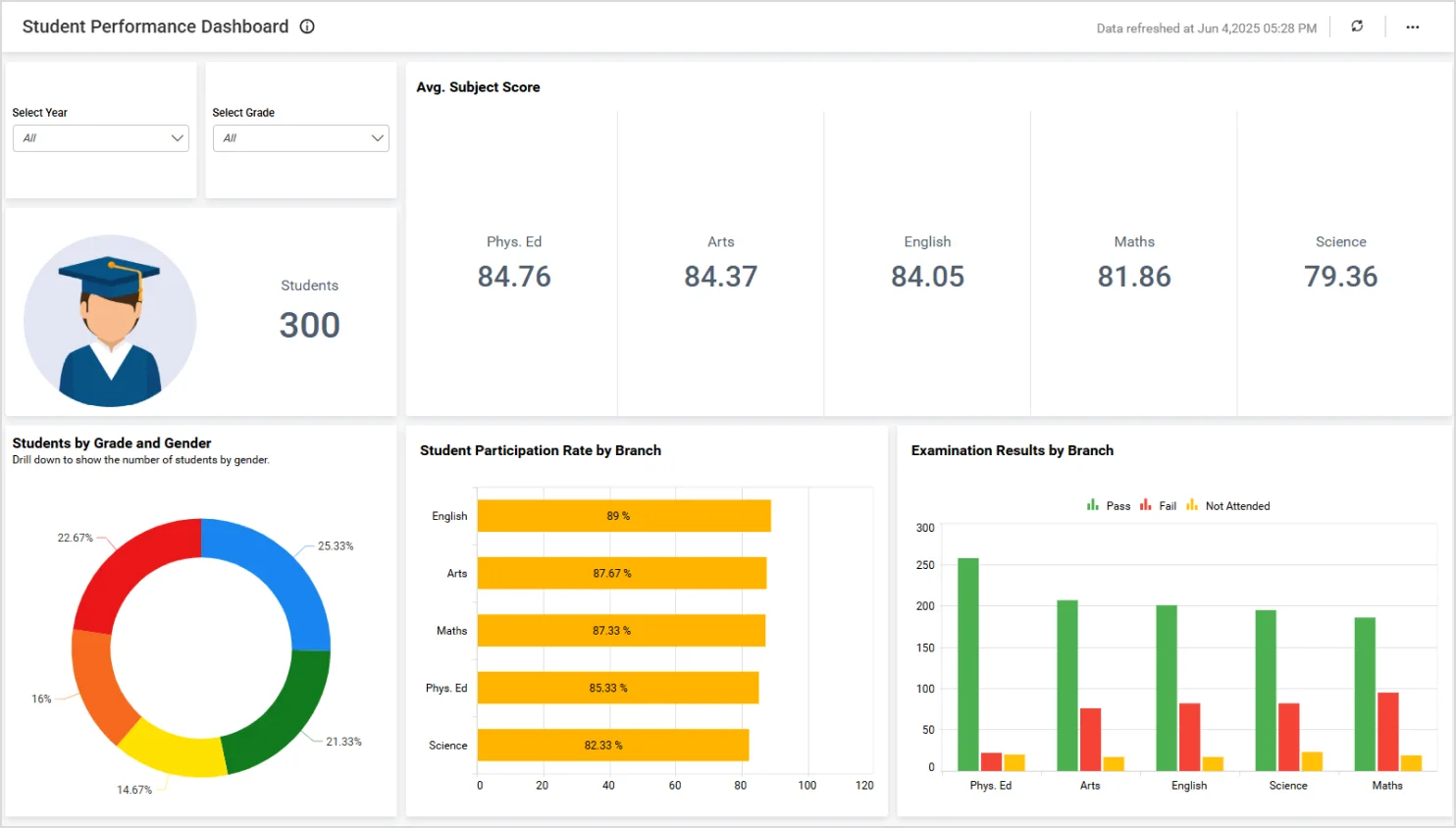
Healthcare
In healthcare, hospitals grapple with the dual pressure of improving patient care and managing operational costs. The challenge includes handling patient readmissions, emergency room loads, and financial constraints. Enterprise analytics supports healthcare providers with a healthcare executive dashboard that tracks these metrics. This enables proactive patient care, optimized staffing, and reduced operational costs, ultimately enhancing patient outcomes and institutional efficiency.
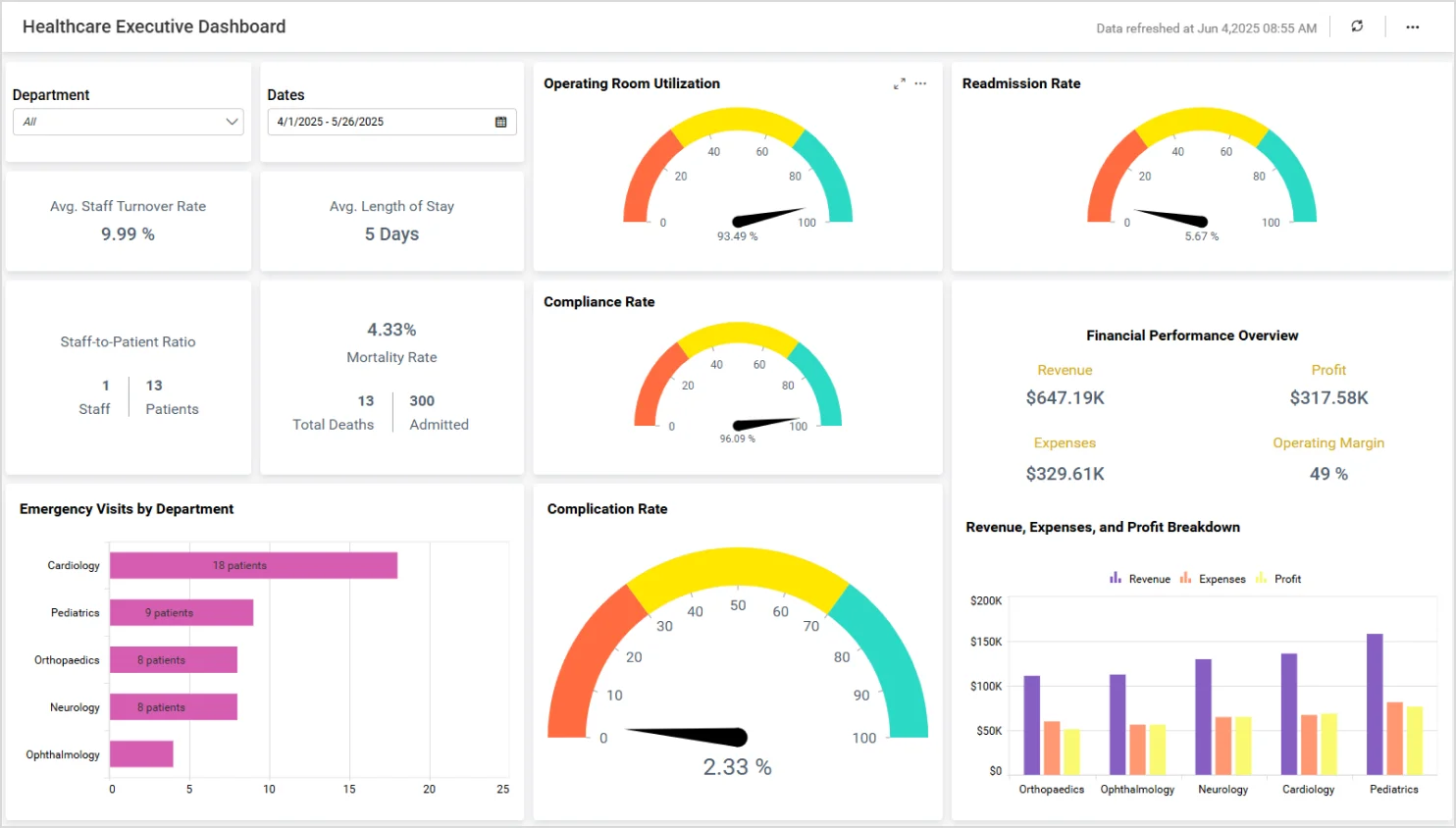
These enterprise analytics use cases highlight how timely, actionable data drives success across diverse industries. With powerful business intelligence tools like Bold BI, organizations can harness enterprise analytics software to overcome critical challenges, unlock insights, and accelerate growth by turning data into meaningful actions.
Conclusion
Enterprise analytics empowers organizations to make smarter, faster decisions and stay agile in a changing market. Bold BI® is an advanced, enterprise-grade analytics platform that lets you connect to 120+ data sources, create stunning dashboards, and analyze data with or without an AI-powered assistant.
Ready to unlock powerful insights and boost performance across your business? Try Bold BI out with a free trial and start improving your enterprise analytics strategy!



















